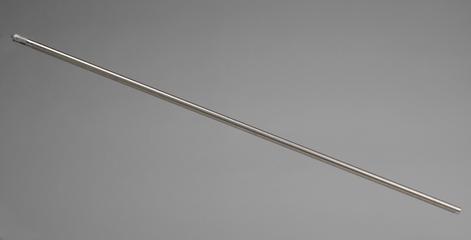
Quadrant of Zero Energy Thermonuclear Assembly (ZETA)
Quadrant of Zero Energy Thermonuclear Assembly (ZETA), designed and built by UKAEA and Metropolitan Vickers Electrical Co., Ltd., Harwell, 1957.
More
In 1957 a team of British scientists imagined a future of abundant energy supply. The machine they created, the Zero Energy Thermonuclear Assembly (ZETA), was an experiment they hoped would successfully fuse hydrogen atoms together into helium, releasing energy in the process. Initial results seemed promising, but later recalculations showed that fusion reactions had not taken place. However, much was learned from ZETA, with newer, more advanced experiments taking up the fusion challenge.
ZETA was a nuclear fusion experiment built in the 1950s. This post-WW2 nuclear age, where nuclear weapons, nuclear power stations and nuclear-powered submarines were being created provided the backdrop to this experimental programme. The aim of nuclear fusion is to combine the nuclei of hydrogen atoms to form helium, which releases large amounts of energy in the process. This is the reaction that powers all the stars in the universe, including our Sun. For Earth-based fusion machines, seawater can provide all the hydrogen fuel needed.
The announcement that the ZETA experiment had successfully achieved fusion in 1958 received worldwide media attention. Rather embarrassingly, ZETA was later realised to be a false hope – it had not achieved fusion. Fusion experiments continue to this day because the benefits of a virtually unlimited, clean, low-carbon and abundant energy supply, if achieved, are huge.
- Measurements:
-
overall: 1680 mm x 1970 mm x 3790 mm, 2450 kg
- Materials:
- metal (unknown) , plastic (unidentified) and textile
- Object Number:
- 1988-18/1
- type:
- thermonuclear assembly
- Image ©
- The Board of Trustees of the Science Museum

























































